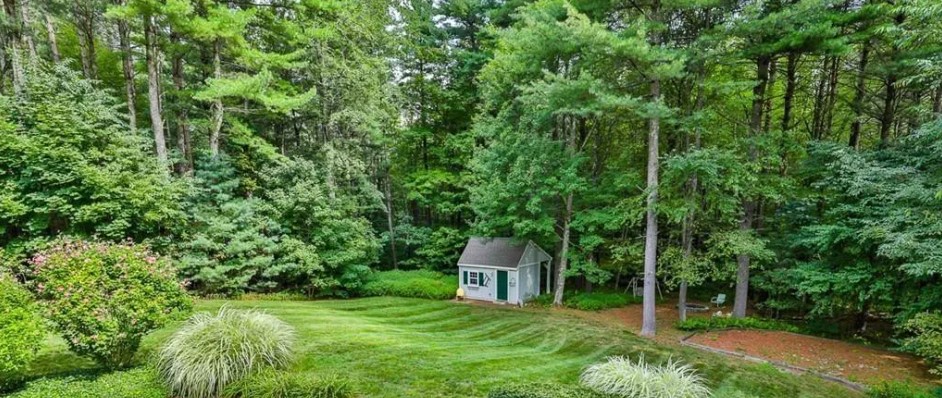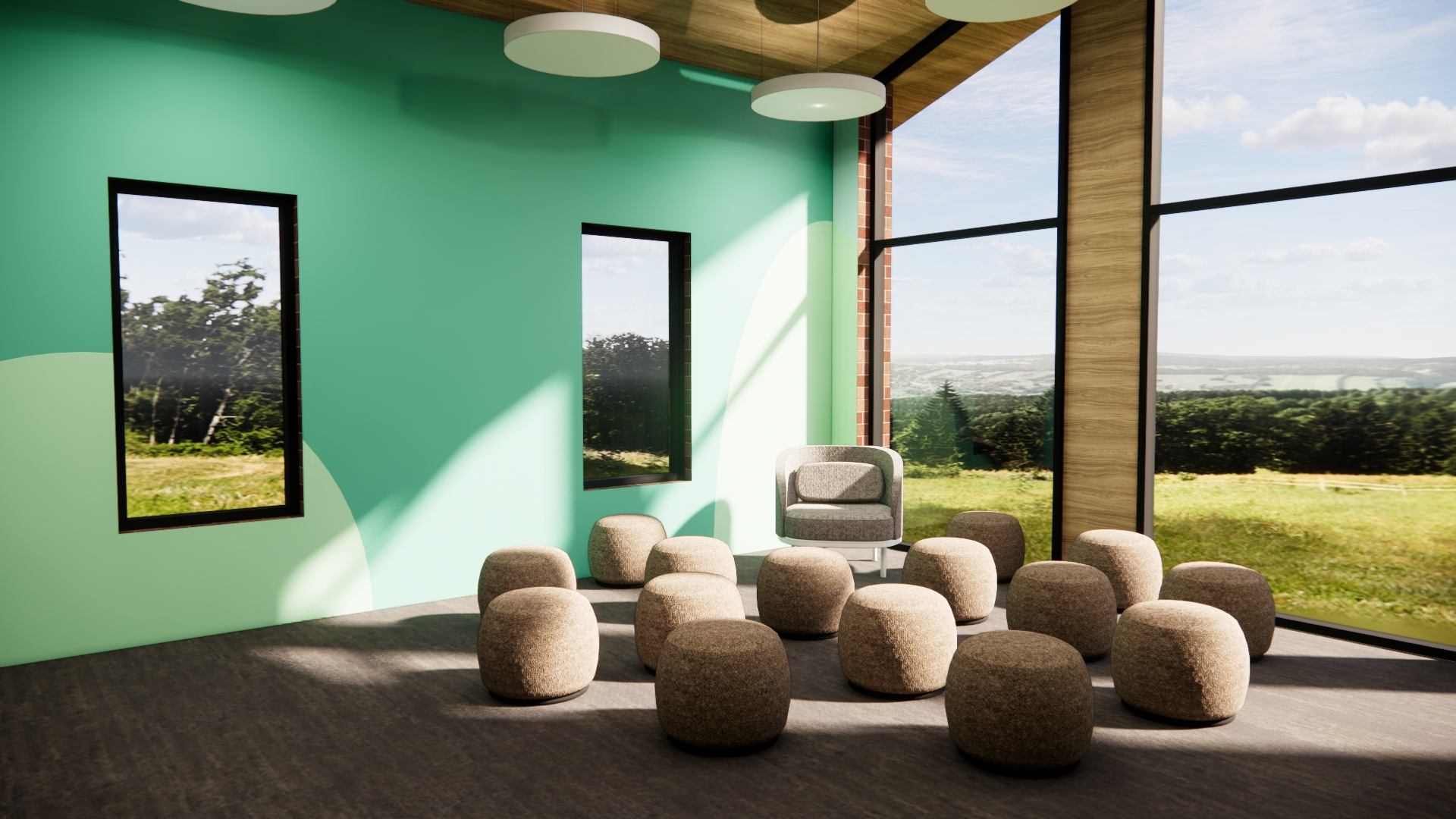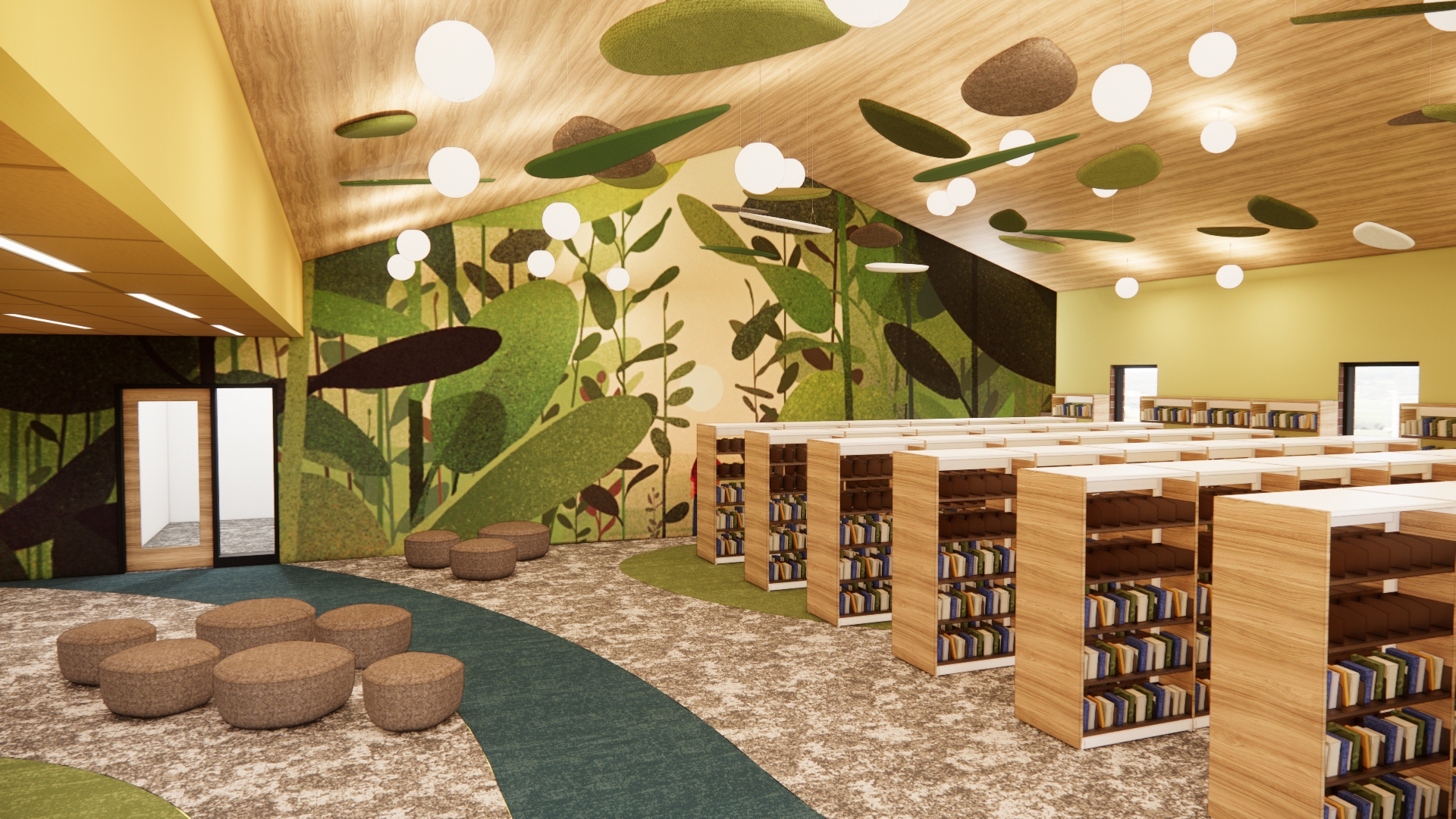Designing for Humans
I’ve always felt attuned to my surroundings, even as a child . I distinctly remember a tutoring space I went to in grade school because I struggled with math. The walls were white, the carpet gray, and fluorescent lights lit up the space like an operating room. In my mind that room was the visual embodiment of boring, lifeless math.
Since then, I’ve done research into what elements of a space can stimulate positive feelings, especially comfort. Studying my own childhood memories and experience with space, I looked for scientific, biological connections between space and contentment. What I found was a distinct connection between the spaces of my happiest memories and the elements of human survival.
Like our paleolithic ancestors, we have basic needs warmth, food, and water. Comfortable spaces often emulate these elements , and humans to this day are drawn to them.

Jeffrey's childhood backyard.
Warmth
Studies have shown that when gathering by a fire, people show increased cooperation and bonding habits . We have an instinct to cooperate with our tribe, and an open fire heightens that primal instinct.
Throughout history, the hearth has been the heart of every home. I grew up with three siblings, my parents, grandparents, and two dogs all in one house. When we had the fireplace lit, we found ourselves gathering by the fire I remember laying on the floor, sandwiched between our sleeping dogs while gazing into the warm, dancing glow of the crackling fireplace . I felt safe, grateful, and connected with those around me . To this day when I see a bonfire or a fire pit at gathering space, I know I’m going to make a new friend and engage in meaningful conversation.
Food
Why does morning dew in the spring smell so good? Why we do hike in forests and tend to potted plants in our homes. When I think of food I think of flora, fauna, and the color green.
I remember playing with neighborhood kids as a child. We played tag in nearby green fields of grass, adorned by the summer sun and wildflowers. The sweeping sounds of leaves the singing of birds and chirping crickets. So much time was spent surrounded by thriving nature. Children and adults alike are drawn to greenery , and comfortable spaces often make a point to include this in their design.
Green is not just a color in a paint can; it is a signifier of life. It signals nearby water, vegetation, and game. Where there is green, there is opportunity to thrive , build shelter, and cultivate food.
Water
Have you ever found yourself staring into the ocean, taking in its beauty and power? Or sitting by a river listening to its soothing flow of water as it trickles over stones. And did you know that people find reflective objects like diamonds beautiful because their sparkle reminds us of water? We see water in many more ways than we realize.
In the woods behind my childhood home was a creek leading to a small pond a creek leading to a small pond in in among the among the dense trees. I remember spending hours there, collecting frogs and catching little fish. I built a small ridge to lay on while observing the ecosystem beneath the waters sparkling surface.
Water is our life blood. We are always aware of our proximity to drinkable water, even unconsciously. We visit beaches just to stare out into the ocean, humbled by its power and beauty.

Design concept for a children’s library.

Design concept for a children’s library.
Modern innovations have made life easier. We don’t need to work on green farms for food, we don’t need a fireplace for heat, and we have plumbing for our water. If the spaces we live in are visually void of the natural elements we once lived amongst, what happens to our minds?
That tutoring room I spent hours in was void of life. But what if I was inclined to associate it with a natural, beautiful, and colorful space. Could this have changed my perspective?
Now, as a designer, I draw from my fondest memories to recreate that sense of comfort, safety, and joy. A warm fire can be represented by a circle of vibrant red chairs in a common space. Glossy green tile can remind us of dewy green leaves on a spring morning. Sparkling silver hardware on cabinetry can remind us of fresh water. All the elements of a space can be done with intention, sometimes backed by science and biology.
When you walk into a space that gives you great comfort, know that there is a story behind every decision. As we take our designs further, we can draw out other associations, more and more personal. We can experiment with all sorts of colors, forms, and textures . But our cavemen brains still long for what is natural, and with design we can satiate that need, because we are not meant to live in a white box. We are meant to live amongst color, movement, and life. Interior design is more than making a pretty space, it is designing an environment like that of the fields, river, and open fires. It is nurturing our humanity.

